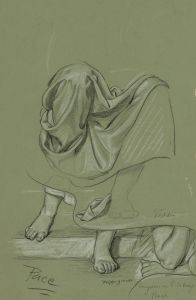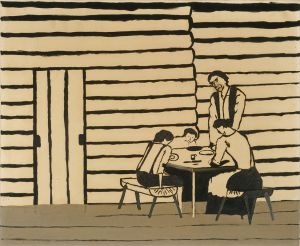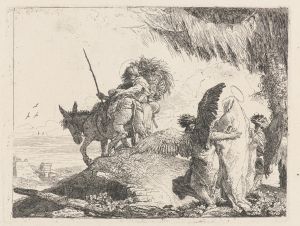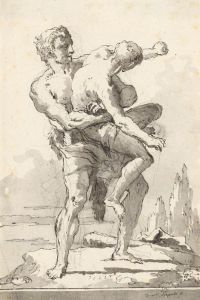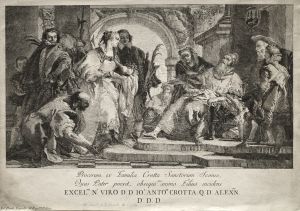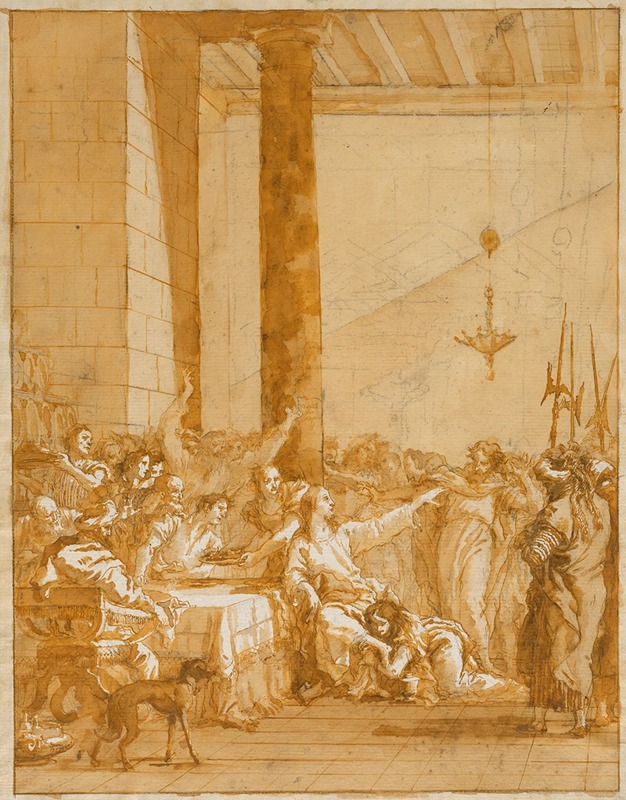
Christ at Supper with Simon the Pharisee, with the Anointment of Christ’s Feet by Mary Magdalen
A hand-painted replica of Giovanni Domenico Tiepolo’s masterpiece Christ at Supper with Simon the Pharisee, with the Anointment of Christ’s Feet by Mary Magdalen, meticulously crafted by professional artists to capture the true essence of the original. Each piece is created with museum-quality canvas and rare mineral pigments, carefully painted by experienced artists with delicate brushstrokes and rich, layered colors to perfectly recreate the texture of the original artwork. Unlike machine-printed reproductions, this hand-painted version brings the painting to life, infused with the artist’s emotions and skill in every stroke. Whether for personal collection or home decoration, it instantly elevates the artistic atmosphere of any space.
Giovanni Domenico Tiepolo, an 18th-century Venetian painter and the son of the renowned artist Giovanni Battista Tiepolo, created the painting Christ at Supper with Simon the Pharisee, with the Anointment of Christ’s Feet by Mary Magdalen. This work reflects Domenico Tiepolo's mastery of religious themes and his ability to depict complex biblical narratives with clarity and emotional depth.
The painting illustrates a scene from the Gospel of Luke (Luke 7:36–50), where Christ is invited to dine at the house of Simon the Pharisee. During the meal, Mary Magdalene, often identified as a repentant sinner in Christian tradition, anoints Christ's feet with ointment and wipes them with her hair. This act of devotion and humility is met with criticism from Simon, who questions Christ's prophetic insight for allowing a sinner to touch him. In response, Christ delivers a parable about forgiveness and love, emphasizing that those who are forgiven much, love much.
Domenico Tiepolo's composition captures the emotional and spiritual tension of the moment. The figures are arranged in a dynamic yet balanced manner, with Christ at the center, radiating calm and authority. Mary Magdalene is depicted in a posture of humility and reverence, contrasting with Simon's more reserved and skeptical demeanor. The artist's use of light and color enhances the drama of the scene, drawing attention to the key figures and their interactions.
This painting is characteristic of Domenico Tiepolo's later works, which often focused on religious and moral themes. While his style was influenced by his father, Domenico developed a distinct approach that combined elements of the Venetian tradition with his own sensitivity to human emotion and narrative detail.
The exact date of the painting's creation is not definitively documented, but it is generally attributed to the latter part of Domenico Tiepolo's career. The work is notable for its intricate details, expressive gestures, and the artist's ability to convey the theological message of forgiveness and redemption through visual storytelling.
The current location of the painting is not widely documented in public sources, and further details about its provenance or commission remain unclear. However, it stands as a testament to Domenico Tiepolo's skill in interpreting biblical stories and his contribution to the Venetian art tradition of the 18th century.






